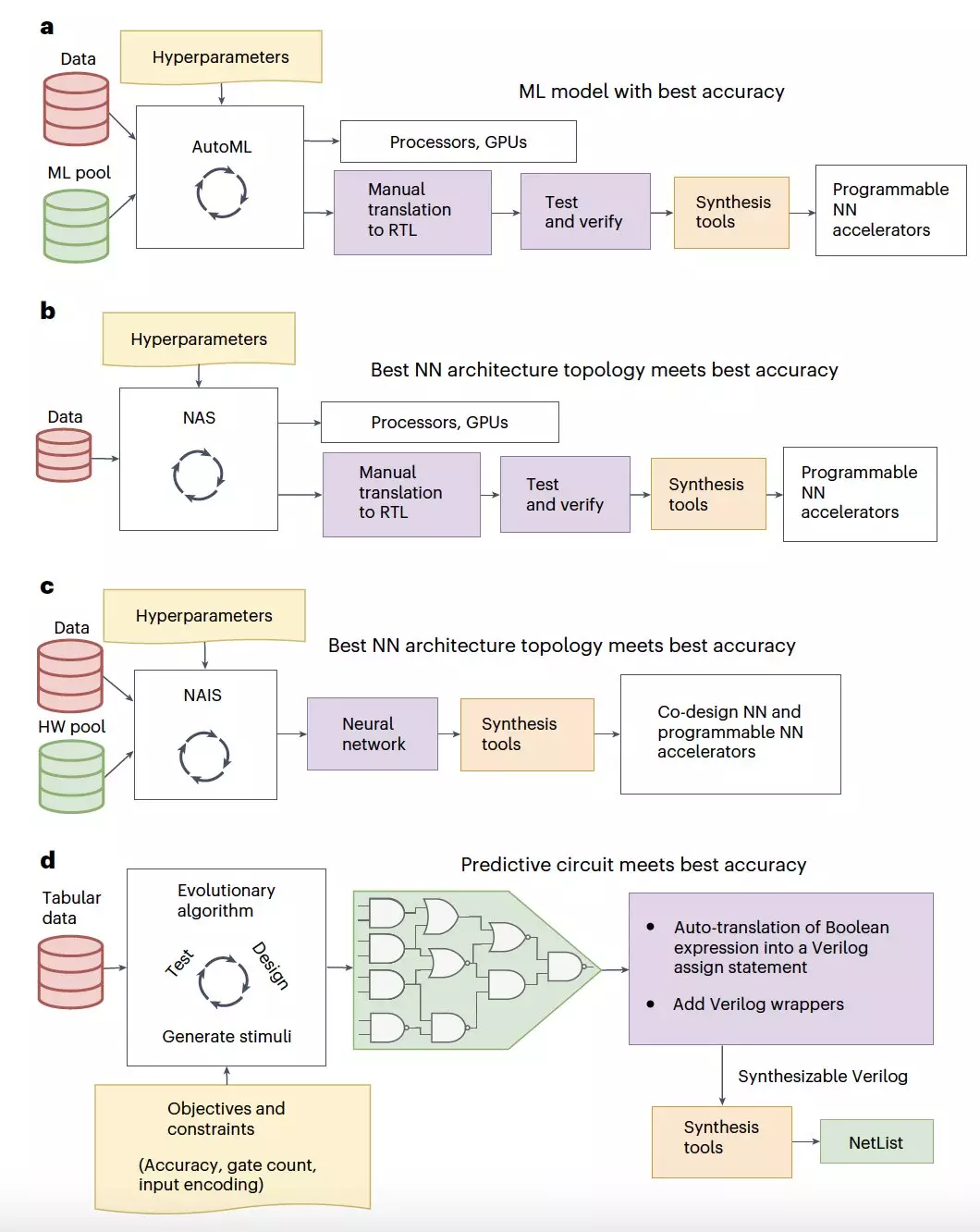In recent years, deep learning techniques have made significant advancements, achieving human-level accuracy in various tasks such as image classification and natural language processing. With the increasing use of these computational techniques, researchers have been exploring new hardware solutions to meet the substantial computational demands required to run deep neural networks. One such solution being developed is hardware accelerators, specialized computing devices designed to efficiently tackle specific computational tasks compared to conventional central processing units (CPUs).
Traditionally, the design of hardware accelerators has been separate from the training and execution of deep learning models. However, researchers at the University of Manchester and Pragmatic Semiconductor took a different approach. In a paper published in Nature Electronics, Konstantinos Iordanou, Timothy Atkinson, and their team introduced a machine learning-based method to automatically generate classification circuits from tabular data, which combines numerical and categorical information.
The researchers presented a methodology known as “tiny classifiers,” which are circuits consisting of merely a few hundred logic gates. Despite their small size, these tiny classifiers were able to achieve similar accuracies to state-of-the-art machine learning classifiers. The team used an evolutionary algorithm to search through logic gates and automatically generate a classifier circuit with maximum training prediction accuracy, containing no more than 300 logic gates.
Through simulations, the researchers found that the tiny classifier circuits showed promising results in terms of accuracy and power consumption. Additionally, they validated their performance on a real, low-cost integrated circuit, demonstrating significant improvements. When implemented as a silicon chip, the tiny classifiers used significantly less area and power compared to the best-performing machine learning baseline. On a low-cost chip on a flexible substrate, they occupied even less area, consumed less power, and exhibited better yield than the most hardware-efficient ML baseline.
Looking ahead, the tiny classifiers developed by the researchers have the potential to revolutionize machine learning applications. For example, they could be used as triggering circuits on a chip for smart packaging and monitoring of goods, as well as in the creation of low-cost near-sensor computing systems. The efficiency and effectiveness demonstrated by these tiny classifiers pave the way for advanced machine learning solutions in various real-world scenarios.
The development of tiny classifiers represents a significant advancement in the field of machine learning. The innovative approach taken by the researchers at the University of Manchester and Pragmatic Semiconductor opens up new possibilities for optimizing classification circuits and improving accuracy while minimizing hardware resources and power consumption. As the technology continues to evolve, the potential applications of tiny classifiers in diverse fields are vast, promising a future where efficient and cost-effective machine learning solutions are accessible for a wide range of tasks.


Leave a Reply